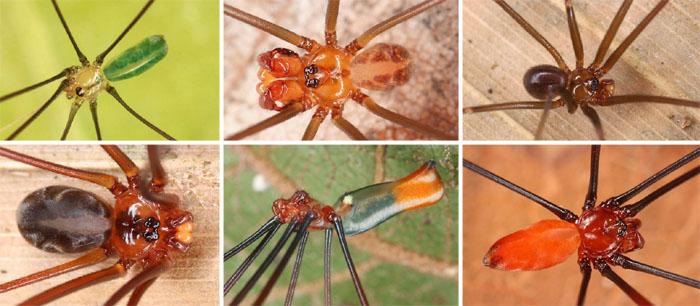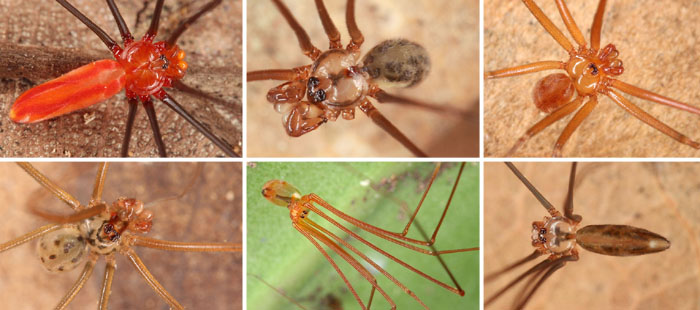
A sample of Mesabolivar species, illustrating the wide range of forms and colors in this genus. Photos BAH.
Unfortunately, several ‘old’ species (i.e. species described before 2000) have been very poorly known, types of several species are lost, and some species are probably misplaced in other genera. The present paper continues a previous effort (Huber 2000) to ameliorate this situation by redescribing ‘old’ species, by reevaluating generic limits, and by providing morphological descriptions and names of material collected in nine expeditions to Venezuela and Brazil between 2002 and 2016.

Just like in Mesabolivar, different species of Carapoia inhabit different microhabitats explaining some of the differences among species. Photos BAH.
This paper also highlights some problems at species level that involve some of the oldest names and that could serve as the basis for exciting and promising follow-up projects. Names like Mesabolivar togatus (Keyserling, 1891), M. brasiliensis (Moenkhaus, 1898), M. cyaneotaeniatus (Keyserling, 1891), and Carapoia lutea (Keyserling, 1891) might currently include more than one species. A combination of field work (dense geographic sampling) and modern species delimitation methods is likely to provide answers.